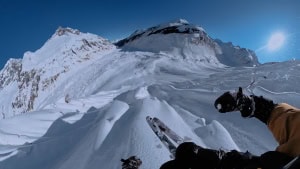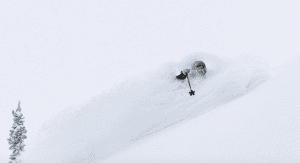2023-2024 North American Snow Season Outlook- What We May See in an El Niño Year
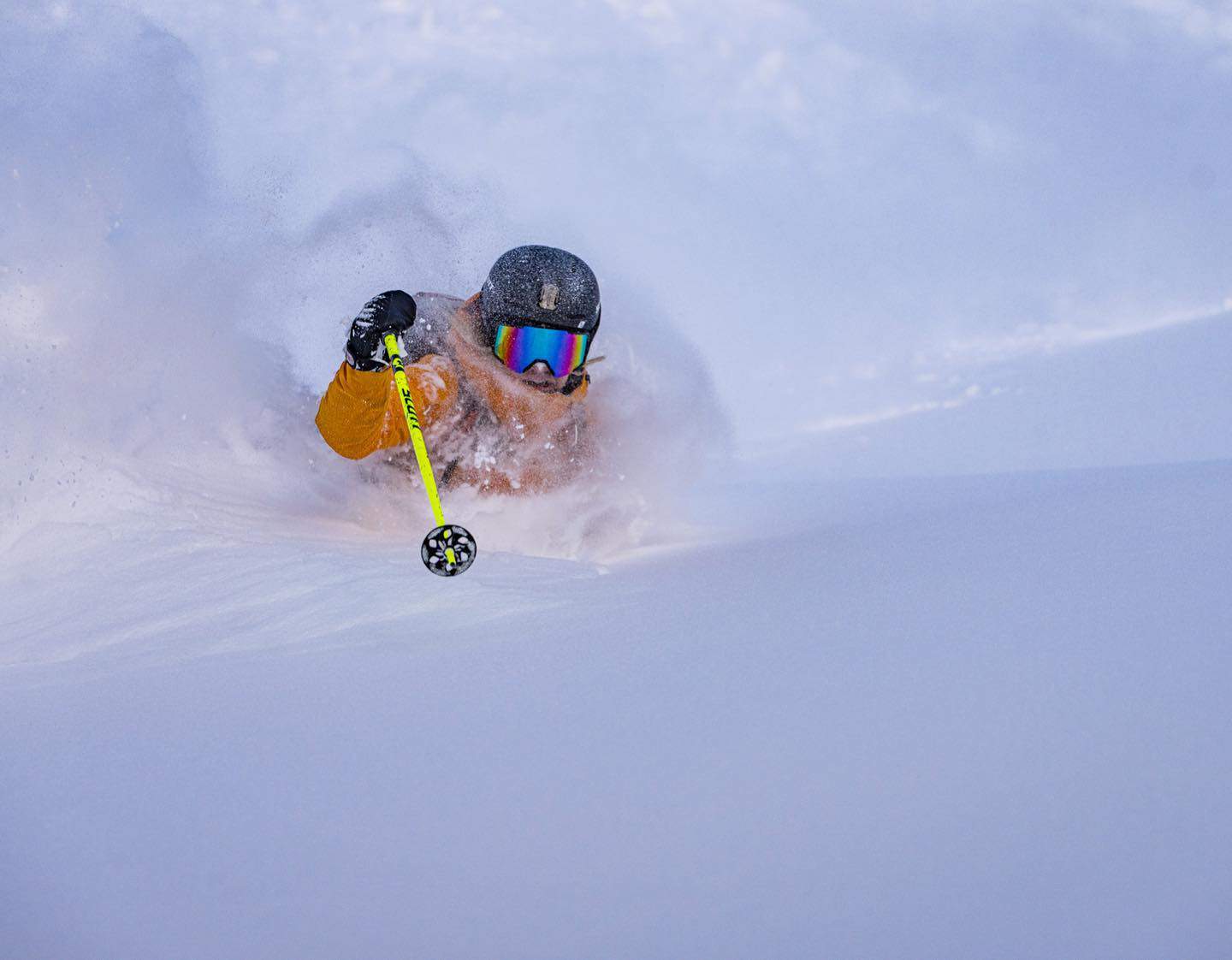
Mountainwatch | The Grasshopper
North America 2023-2024 snow season is on the map. The first series of legitimate snow storms rolled through last week, bringing freezing temperatures and deep powder to many resorts out west. From the Cascades in the northwest, to the Rockies of Alberta down to Utah and Colorado, a solid 20-50cm+ has been dumped, turning everything wonderfully white and providing a timely boost for resorts who are looking to open their gates within the next several weeks – for some in the next few days.
Snowmass, Colorado, appears to have received the biggest walloping, with a storm total of 81cm. That’s about the standing height of a Wallaby! (the Bennett’s variety, not the Aussie rugby player type). It’s enough to get one frothing, which inevitably leads one to ask the question: what’s the snow going to do this season?
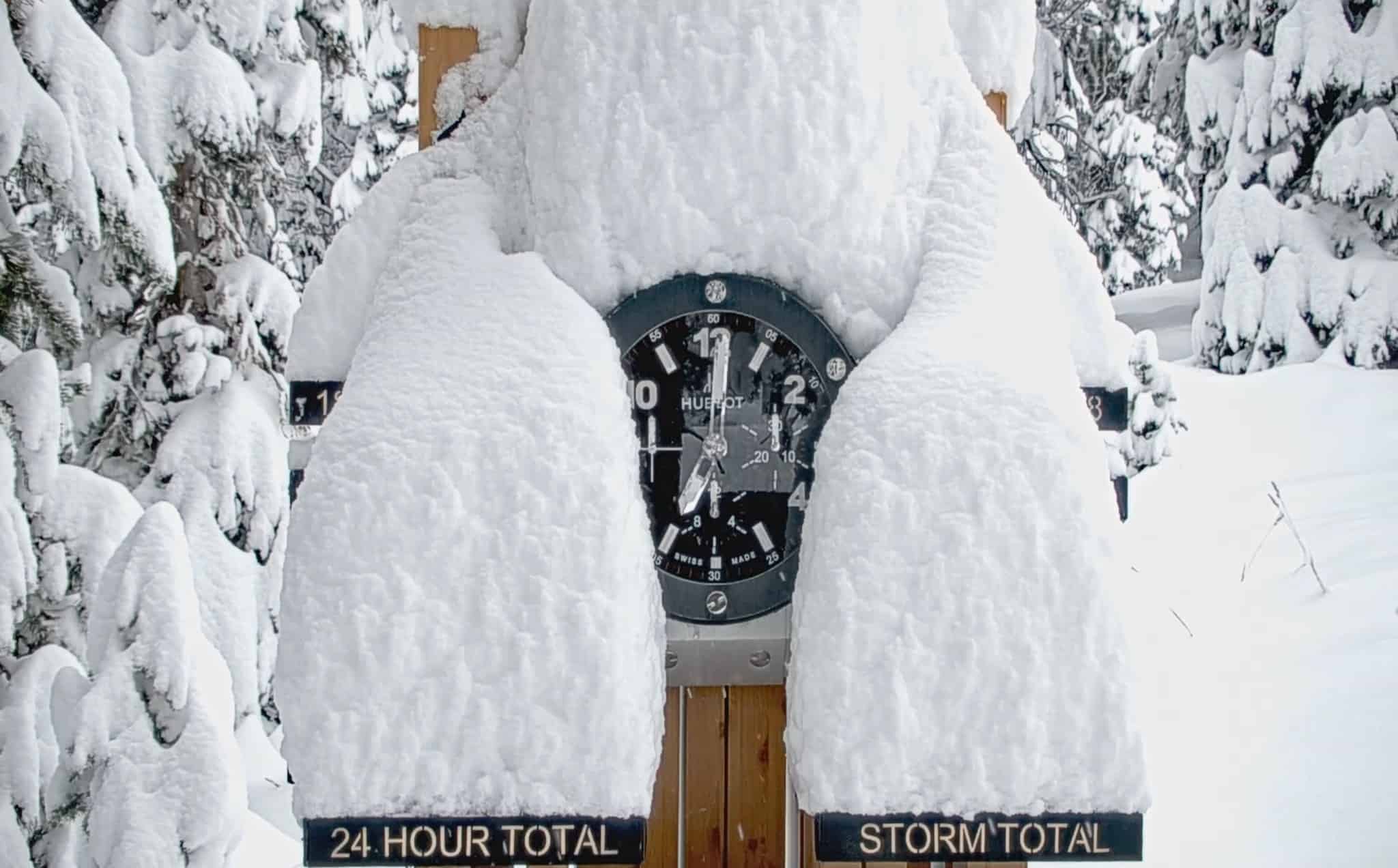
To answer that question, we need to look at is what’s happening far, far away – across the tropical region of the Pacific Ocean. Here, we find the see-sawing of sea surface temperatures (SST), winds and convection on a monthly to yearly timescale – a pattern called the El Niño Southern Oscillation, aka ENSO, which most of you savvy readers have heard about by now.
Right now, the ENSO is in full blown El Niño mode, with warmer than average SST across the tropical Pacific. A particular region of interest in the middle, called the Niño 3.4 region, is currently 1.6°C above average, which falls within the “strong” El Niño category. Continued warming is expected over the next couple of months, and we could see this El Niño reaching the haughty heights of a “very strong” event (Niño 3.4 ≥ 2°C), before starting to cool off later in the season.
These strength categories are fairly arbitrary and unofficial, but usually, the stronger the El Niño, the more likely it is that we’ll see its mitts all over our maps. However, with warm SST prevailing almost everywhere else across the globe, this El Niño may not stand out as it once would have.
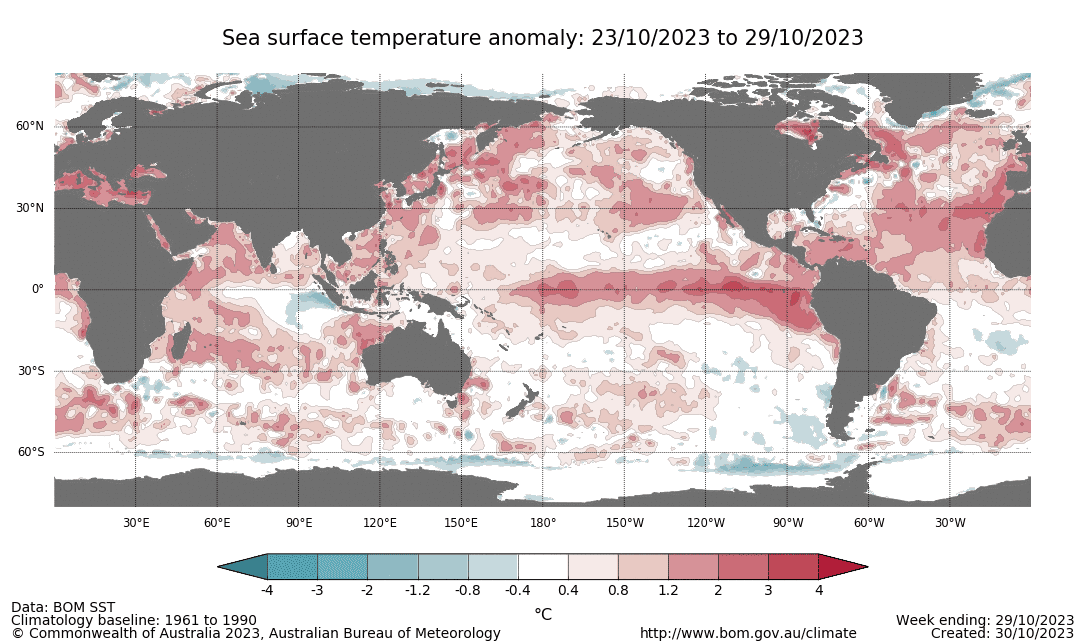
August was the warmest out of any month for global SST since records began way back in 1854, while September was the second warmest. El Niño tends to make earth a warmer place, so we could still see these records surpassed even further in the coming months. It’ll be interesting to see if this has a tempering effect on atmospheric responses to this El Niño event. The atmosphere has already kicked into El Niño gear, but it isn’t exactly topping the charts at this point in time.
What effect does El Niño have on North American snowfall? Well, more often than not we see more snow than average in the Sierras, and southern Rockies of Utah, Colorado, Arizona and New Mexico. The Rockies further north, as well as the Cascades, often see less than average.
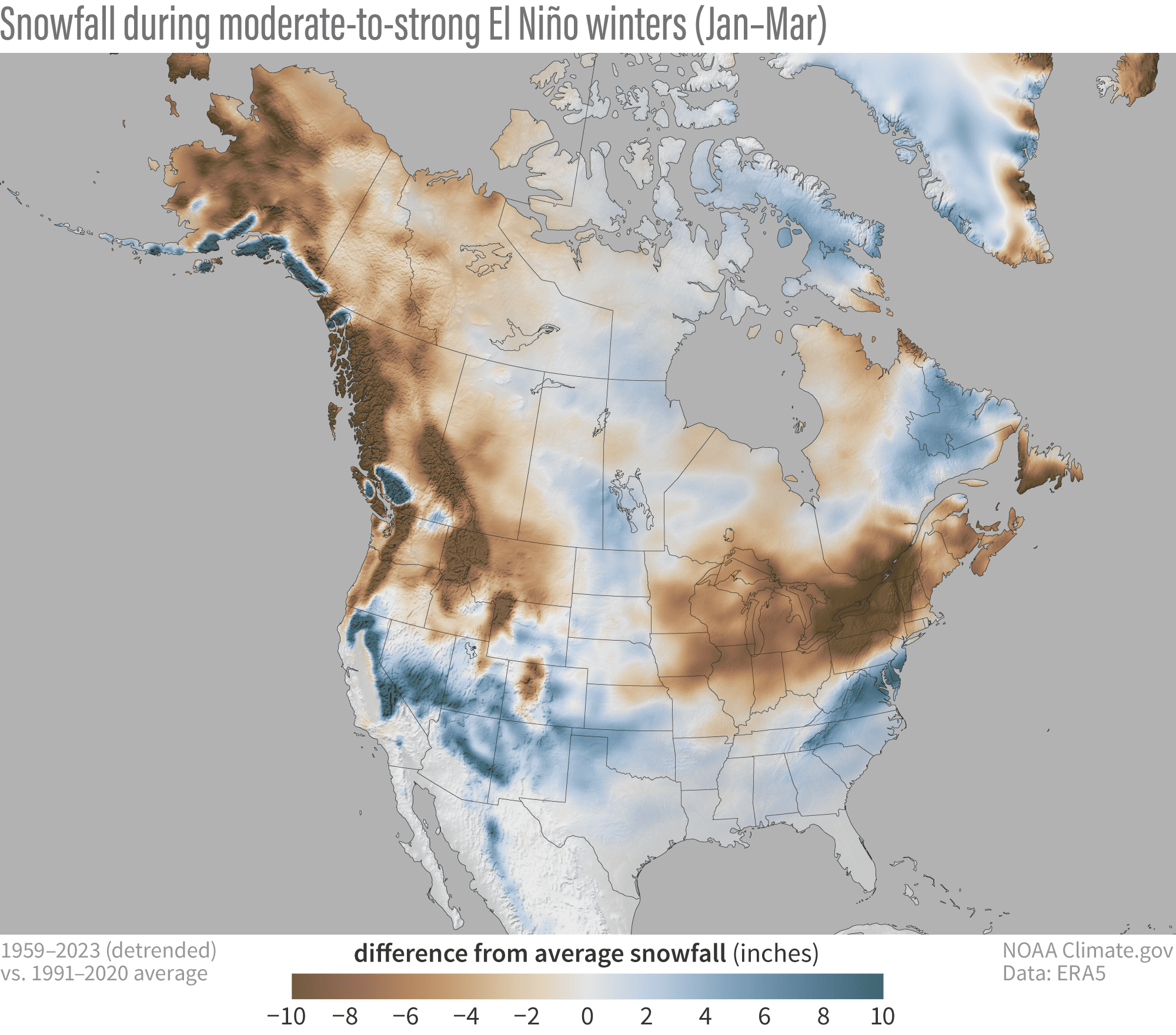
However, El Niño’s influence is a little more nuanced than it appears at first glance. To understand some of these intricacies, it helps to first understand how El Niño modifies the atmosphere to make the south snowier than the north.
During El Niño events, the Subtropical Jetstream tends to shifts southwards over the Pacific Ocean while strengthening eastwards towards North America. This has the effect of steering storms out of the north Pacific and across the southern tier of North America, resulting in more snow there. This southern storm track is neatly illustrated in the image below.
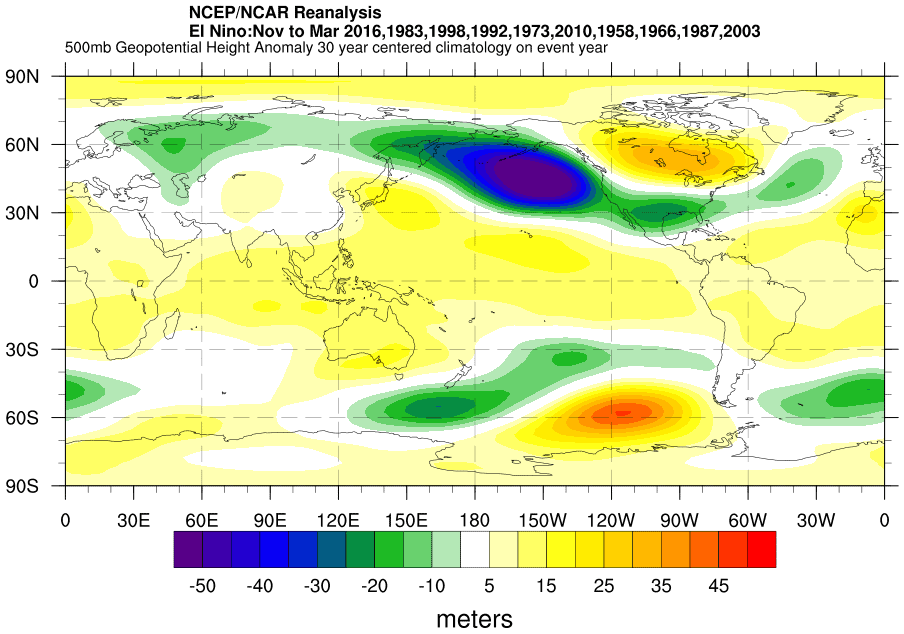
However, if you squint at the El Niño snowfall image, you’ll notice that those mountains exposed to the east tend to fare better than their counterparts immediately to their west. This is because we tend to see easterly wind anomalies (or rather weaker westerlies) on the northern side of this heightened storm activity across the south. It’s a kind of reversal, or weakening, of the usual rain shadow effect, which normally sees more precipitation falling in mountains exposed to the west, while those areas to the east are much drier.
For example, the Front Range in Colorado may fare better than the Park and Sawatch Ranges just to the west, or that the Wasatch Range in Utah looks a little underdone compared to elsewhere in the state. It’s the same for the Sierras; the eastern slopes may fare better than the western slopes where warmer temperatures along the west coast can also affect snow levels. The same could be said for the Cascades and elsewhere in the Rockies.
The only glitch in this picture is an area of higher than average snowfall over the southern Coastal Mountains of Canada. The only explanation I can come up with to answer this oddity is that here the mountains are high enough, and lie perpendicular enough to a more southerly tilted flow so as to pick up some of the plentiful precipitation which lies just off the coast during El Niño.
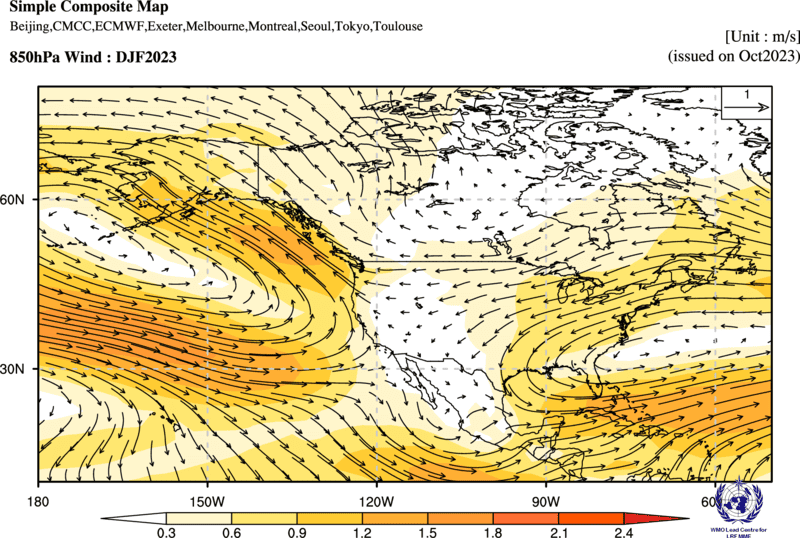
As you might expect, the bulk of climate models as well as the winter outlook produced by NOAA’s Climate Prediction Centre have El Niño’s greasy finger prints all over them. The odds favour the south having a bumper season. However, warm temperatures could affect resorts in the Sierras, where snow levels and snow quality could be more of an issue than usual.
The northern U.S. and Canada are most likely to see below-average snowfall, but when we’re talking average annual snowfalls of somewhere in the ball park of 5-12 metres, a little less may not go a miss (yes, I did get very side-tracked scrolling through the statistics of dozens of resorts while trying to image such quantities of powder).
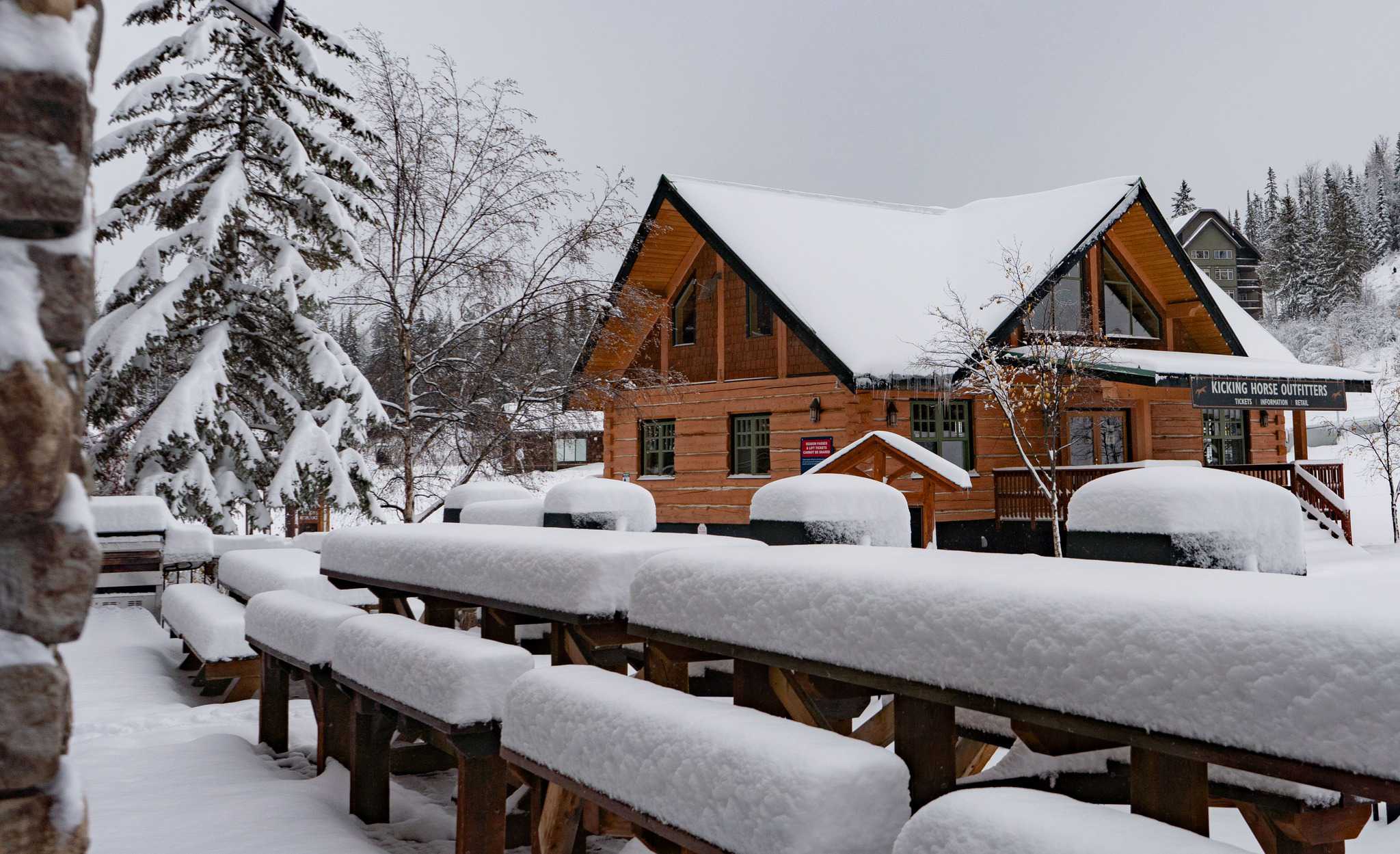
Although warmer temperatures could also be an issue for low elevations of the Cascades and Coast Mountains, the interior regions are less affected by rain, as it remains cold there, and whatever snow falls tends to stick around.
Well, that’s about it from me for now guys and gals. Remember, the discussion above is dealing with averages over the length of a season. But we all know it’s often more about timing, and the best way to do that is to stay in tune with the weather, which you can do right here on Mountainwatch, where I’ll be issuing weekly forecasts for North America and Japan starting in December. Until then…
Grasshopper

